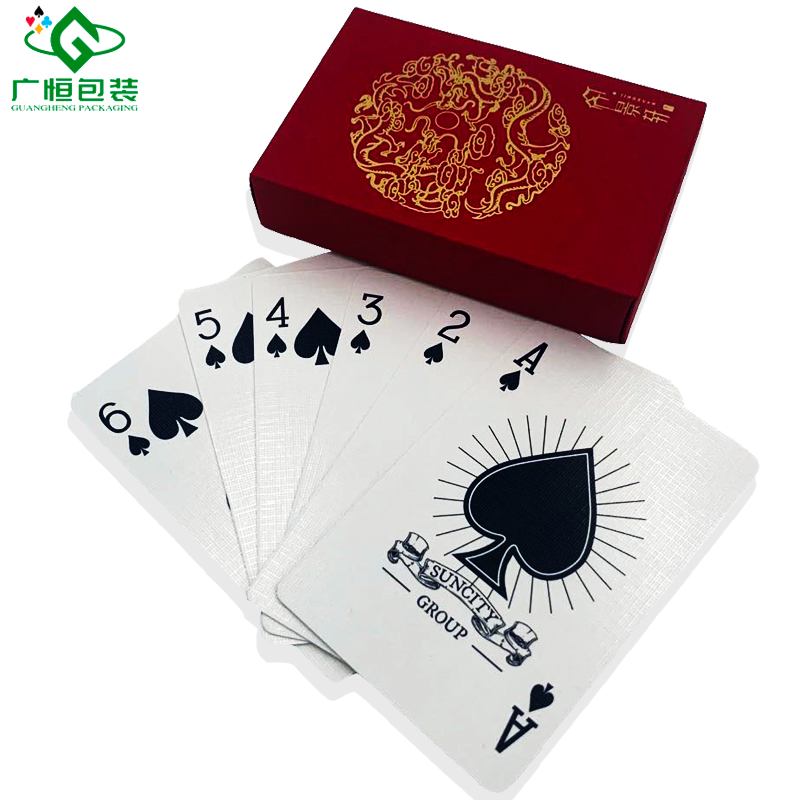Email format error
Email cannot be empty
Email already exists
6-20 characters(letters plus numbers only)
The password is inconsistent
Email format error
Email cannot be empty
Email does not exist
6-20 characters(letters plus numbers only)
The password is inconsistent

News
The Origin of Playing Cards
High Quality custom Design Board Game supplier
One theory was invented by astronomer Zhang Sui of the Tang Dynasty. It was originally called "leaf play" because cards are only as big as leaves. Ouyang Xiu, a writer in the Song Dynasty, also recorded the "leaf play" in his "return to the field", which was developed from the word game. In the Yuan Dynasty, Marco Polo traveled to China. For a long time, he served as an official in the Chinese court. He was very close to the upper intellectuals and learned this game. Later it spread to Europe. In the beginning, it was only a luxury for the aristocrats, but because it was cheap, had a variety of ways to play, and was easy to learn, it soon became popular among the people. Europeans improved card games according to their own culture and tradition, and finally "playing cards" appeared.

There is also a saying that it is said that as early as the period of the struggle between Chu and Han in the late Qin Dynasty, General Han Xin invented a card game to ease the homesickness of soldiers. Because the card surface was only the size of leaves, it was called "leaf play". (the "leaf card", which is about the size of two fingers, is 8 cm long and 2.5 cm wide. It is mounted with silk and paper, and the pattern is printed with wood engraving).
It is said that this is the prototype of playing cards. Poker has a history of hundreds of years. It is said that the earliest Western cards flowed from Asia to Europe during the Crusades in the 13th century.
In the 16th century, a kind of card called the "winning card" was popular in the West. In the early 17th century, it became a whist game similar to bridge. It was popular in London and the Netherlands. In 1894, bridge came into being in the London club of England. This kind of bridge has evolved into the present playing card.
As a kind of Western cards, the design of playing cards also contains endless knowledge. It is designed according to the calendar. In a sense, poker can be said to be the epitome of the calendar.
Later, this divination tool evolved into a toy, and its divination function gradually faded and was forgotten by people.
Why to use these four patterns as the colors of playing cards has always been said a lot. There are two concentrated statements:
First, the four colors represented the four major industries of the society at that time, among which spades represented spears and soldiers; Plum blossom represents clover, symbolizing agriculture; The square represents the bricks and tiles used by artisans; Hearts represent hearts and priests.
The other is that the four designs and colors come from the patterns of ancient European divination utensils, in which spades represent olive leaves and symbolize peace; Plum blossom is a clover, which means luck; The diamonds are in the shape of diamonds, symbolizing wealth; Hearts are hearts, symbolizing wisdom and love.
The 54 card pattern of playing cards is also very wonderful to explain:
The king represents the sun, the Little Wang represents the moon, and the other 52 cards represent 52 weeks of the year; The four colors of hearts, diamonds, plum blossoms and spades respectively symbolize the four seasons of spring, summer, autumn and winter;
Each suit has 13 cards, indicating that each season has 13 weeks.
If J, Q and K are regarded as 11, 12 and 13 points, and Wang and Wang are half points, the total points of a deck of playing cards is exactly 365 points. In leap years, big and small Wang are counted as 1 point respectively, a total of 366 points.
Experts generally believe that the above explanation is not a coincidence, because the design and invention of playing cards are inextricably linked with astrology, divination, astronomy and calendar.
Spades represent death, hearts represent love, diamonds represent money, and plum blossoms represent happiness.
Searching for a custom Design Board Game, Design Board Game supplier, High Quality Design Board Game from China, you can get high-quality products at a nice price.

